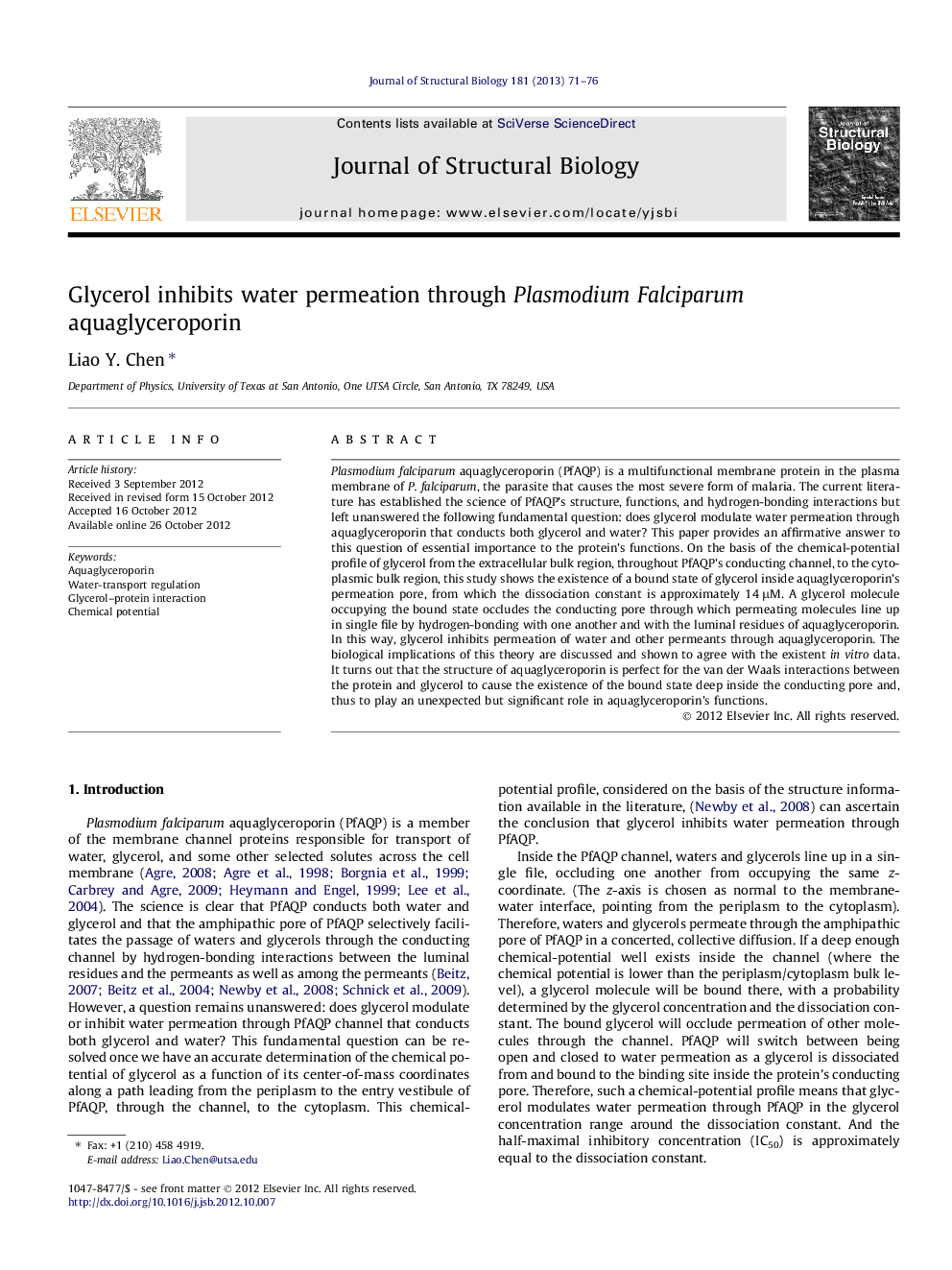| Article ID | Journal | Published Year | Pages | File Type |
|---|---|---|---|---|
| 2828550 | Journal of Structural Biology | 2013 | 6 Pages |
Plasmodium falciparum aquaglyceroporin (PfAQP) is a multifunctional membrane protein in the plasma membrane of P. falciparum, the parasite that causes the most severe form of malaria. The current literature has established the science of PfAQP’s structure, functions, and hydrogen-bonding interactions but left unanswered the following fundamental question: does glycerol modulate water permeation through aquaglyceroporin that conducts both glycerol and water? This paper provides an affirmative answer to this question of essential importance to the protein’s functions. On the basis of the chemical-potential profile of glycerol from the extracellular bulk region, throughout PfAQP’s conducting channel, to the cytoplasmic bulk region, this study shows the existence of a bound state of glycerol inside aquaglyceroporin’s permeation pore, from which the dissociation constant is approximately 14 μM. A glycerol molecule occupying the bound state occludes the conducting pore through which permeating molecules line up in single file by hydrogen-bonding with one another and with the luminal residues of aquaglyceroporin. In this way, glycerol inhibits permeation of water and other permeants through aquaglyceroporin. The biological implications of this theory are discussed and shown to agree with the existent in vitro data. It turns out that the structure of aquaglyceroporin is perfect for the van der Waals interactions between the protein and glycerol to cause the existence of the bound state deep inside the conducting pore and, thus to play an unexpected but significant role in aquaglyceroporin’s functions.
